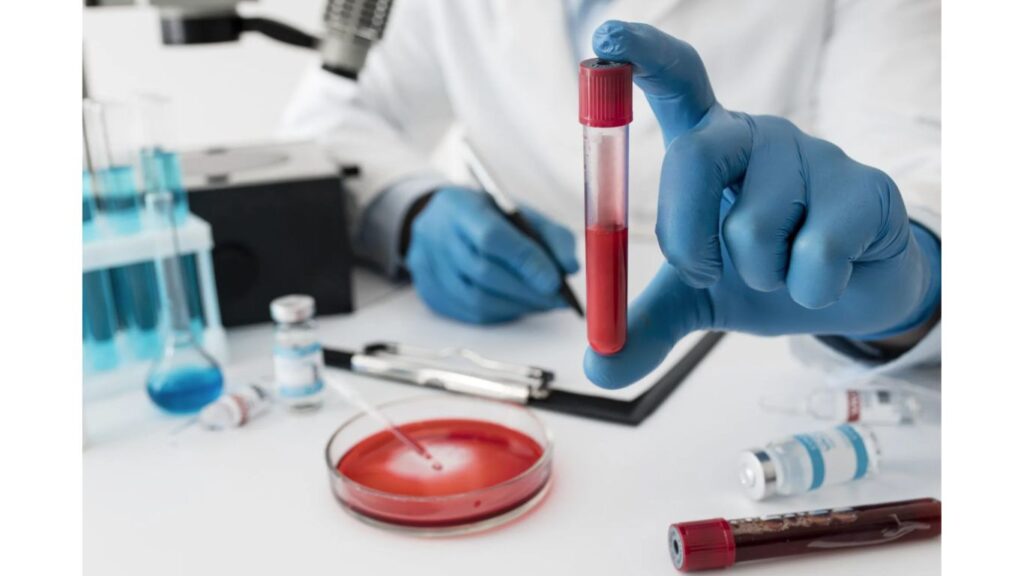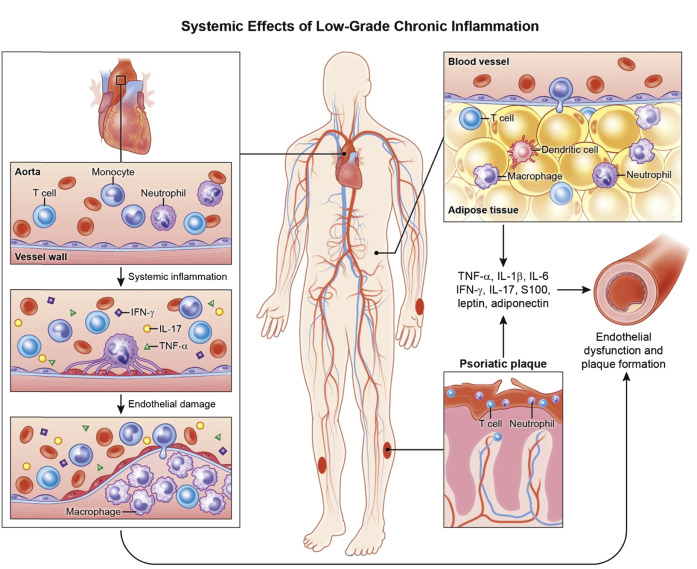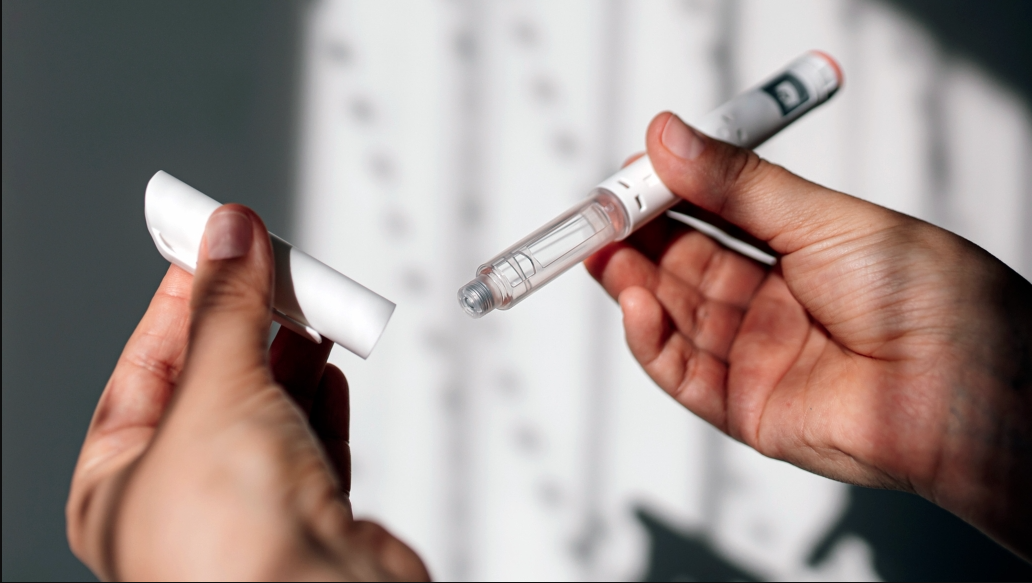- The aberrant immune reaction of the body to gluten causes celiac disease.
- The most effective ways of testing for celiac disease are also being considered, experts say.
- A blood test called WBAIL-2 can help pick up celiac disease and also lead to a biopsy-free diagnosis, a new study suggests.
Celiac illnessA Trusted Source happens when a person’s immune system reacts to gluten in an unusual way. Continuous efforts are being made to enhance the diagnosis of celiac disease.
The usefulness of diagnosing celiac disease with a blood test that analyzes the cytokine interleukin-2 was assessed in a recent study that was published in Gastroenterology.
According to the study’s findings, even for those on a gluten-free diet, the test was very successful in diagnosing celiac disease.
Crucially, the test might provide an alternative method of diagnosing celiac disease because it would not necessitate eliciting symptoms.
So can celiac disease be accurately diagnosed with this blood test test method?
Celiac disease is often misdiagnosed or delayed, say the authors of this recent study. To be diagnosed, patients usually have to eat gluten and undergo small intestine biopsy.
The immune response of a specific subclass of immune cells called CD4+ gluten-specific T-cells is also linked to celiac disease, investigators sought to find out whether a blood test measuring the release of a protein called interleukin-2 – which some T-cells produce – may aid in the precise diagnosis of celiac disease.
Eighteen1 adults of any age aged 18–75 years were included in this study. 88% of these had celiac disease and the remaining were patients who were treated as controls. 32% of the participants in the control group were on a gluten free diet and had non-celiac gluten sensitivity. The remaining subjects were healthy gluten-intolerant subjects.
Blood test samples from each participant were taken and information on prescription drugs and medical history was gathered by researchers.
For “a single-dose open-label gluten challenge,” a subset of participants—including healthy controls, those with non-celiac gluten sensitivity, and those receiving treatment for celiac disease—went on a gluten-free diet for at least four weeks before consuming gluten.
A three-day oral gluten challenge was also completed by some patients who had received treatment for celiac disease. When taking the oral gluten challenge, participants kept a journal to record their symptoms.
The WBAIL-2 assay, a blood test that quantifies the release of interleukin-2 in vitro with the addition of gluten peptides, was employed by the researchers.
Higher interleukin-2 concentrations and fold changes were seen in people with celiac disease, indicating that the test was often successful in confirming the condition. For those with a particular, uncommon genotype, the results were less sensitive.
Additionally, the analysis revealed a correlation between the WBAIL-2 assay and the subjects’ age and the duration of their gluten-free diet.
At least people who follow a gluten free diet can be tested for gluten sensitivity using a new test.
After the oral challenge of gluten, the researchers then measured participants’ levels of interleukin-2 in their serum. Those with celiac disease had higher levels of interleukin-2 after the oral challenge.
Additionally, these levels “reliablely correlated with the results of WBAIL-2, ” the researchers report. So if interleukin-2 levels were high on one test, they were high on the other test as well.
Also they examined the relationship between the WBAIL-2 results and the expression of gluten-specific T cells – which are more common in people with celiac disease – and found that there was a correlation between the WBAIL-2 test and the presence of these cells (and activated forms of these cells).
As well as that after a gluten challenge, participant levels of WBAIL-2, gluten-specific T lymphocytes and activated forms of these cells increased, one participant’s WBAIL-2 test also declined and gluten-specific CD4+ T cells were reduced on day six.
Researchers also examined patients with celiac disease who had received treatment and the relationship between the tests and their symptoms following gluten intake. Participants who had vomiting had a higher frequency of gluten-specific T-cells. Both the WBAIL-2 level and the serum interleukin-2 measurement after the gluten tolerance test were higher. One subject who reported extreme fatigue but did not vomit also had a significantly elevated WBAIL-2 level.
Additional investigation revealed that the cells responsible for the gluten-induced generation of interleukin-2 are activated CD4+ T cells specific to gluten.
The findings imply that even in cases where a person is already on a gluten-free diet, the WBAIL-2 assay can aid in the diagnosis of celiac disease.
Limitations of the study and future research
This study has some limitations: it has limited generalizability, among other things because the study was conducted in a single setting, the majority of the population was women and the study inclusion criteria were stringent.
Some subgroups had small sample sizes so further research may be particularly relevant in these subgroups. Further investigation is needed to gauge how well such testing would work in young people and those on immunosuppressants (researchers didn’t exclude such populations).
Moreover, the researchers note that “there is no evidence for reproducibility between laboratories,” and therefore, more work is needed before the application of the WBAIL-2 assay in a clinical setting can be considered feasible.
Furthermore, the authors did not discuss the cost-effectiveness and suitability of the WBAIL-2 test with existing celiac disease diagnosis methods.
At best the test might not work on everyone ( it was less accurate for some people with a specific genotype ).
However, there were relatively few persons with this genotype in this study, and it is probable that the test was unable to detect how much interleukin-2 response any of these participants had.
All things considered, additional study is needed on this subgroup of people and the application of this test.
In an interview with Medical News Update, Ian Storch, DO, an osteopathic physician with expertise in internal medicine and gastroenterology and a member of the American Osteopathic Association, discussed the study’s results.
Scientists admit that the variation between the WBAIL-2 assay and the serum measurement of interleukin-2 after a gluten challenge may be the cause of the discrepancies between the two tests.
“We need to look at bigger samples to really establish its clinical relevance,” said Shilpa Mehra Dang, MD, a contributor to LabFinder and double board-certified in internal medicine and gastroenterology with Medical Offices of Manhattan. She was also not involved in this study.
Research can concentrate on more particular information about gluten-specific T cells in addition to bigger studies.
Assisting individuals with celiac illness
Accurate diagnosis is crucial since celiac disease is a difficult condition to manage. Researchers hypothesize that measuring WBAIL-2 and serum interleukin-2 following gluten ingestion may eliminate the need for biopsies to confirm a celiac diagnosis in those who have the condition.
The WBAIL-2 assay may also be used as a first test for those on a gluten-free diet and aid in predicting the severity of symptoms, according to the study’s authors.
“I do not believe that excision of histology to confirm the diagnosis can be proposed based on the data supplied,” Storch stated.





One thought on “Identify celiac disease before any symptoms appear. A new blood test might be need to do in 2025”